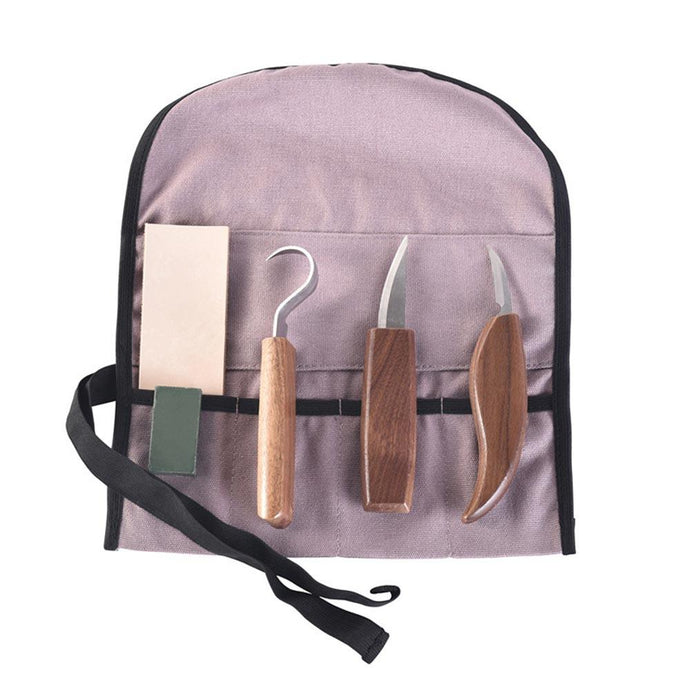The Timeless Craft of Wooden Handscrew Clamps: An Enduring Tool for Precision and Versatility
In the realm of woodworking, the wooden handscrew clamp stands as a testament to enduring craftsmanship and functionality. This seemingly simple tool has been a staple in workshops for centuries, embodying the essence of precision and versatility that woodworkers seek. Despite the advent of modern clamps and gadgets, the wooden handscrew clamp remains an indispensable tool, celebrated for its ability to handle various tasks with elegance and efficiency.
The wooden handscrew clamp's design is both ingenious and straightforward. Consisting of two wooden jaws connected by a pair of threaded rods, this clamp operates with a mechanism that allows it to apply a firm, adjustable pressure to workpieces. The beauty of the handscrew lies in its simplicity - adjustable by turning the screws, it can hold workpieces of varying sizes and shapes securely. The wooden jaws, often crafted from hardwoods like maple or beech, provide a gentle grip that reduces the risk of damaging delicate surfaces.
One of the primary advantages of wooden handscrew clamps is their versatility. Unlike modern clamps that might be designed for specific purposes, the handscrew clamp can adapt to a wide range of tasks. It excels in tasks requiring precise alignment and uniform pressure, such as gluing up panels, edge jointing, or holding parts during intricate carving or assembly. The wide, adjustable jaws allow for even pressure distribution, ensuring that the workpiece remains steady without being marred by excessive clamping force.
The handscrew clamp's ability to handle irregular shapes is another notable feature. The adjustable jaws can accommodate odd angles and shapes that might be challenging for other clamping mechanisms. This makes it particularly useful for woodworking projects involving curved or angled components, where traditional clamps might struggle to provide a secure hold. The flexibility of the handscrew clamp ensures that it can be used effectively across various types of woodworking tasks, from crafting intricate inlays to assembling complex joints.
Despite their effectiveness, wooden handscrew clamps require careful maintenance to ensure their longevity. The wooden components should be regularly inspected for signs of wear or damage. Applying a wood conditioner or preservative can help protect the jaws from moisture and prevent warping. The threaded rods should be kept clean and lubricated to ensure smooth operation. Regular upkeep ensures that the handscrew clamp remains a reliable tool for years to come, continuing to perform its functions with the same precision and reliability it has provided for generations.
The craftsmanship involved in making wooden handscrew clamps is a reflection of their enduring appeal. Skilled craftsmen meticulously shape and assemble each clamp, ensuring that the jaws are perfectly aligned and the threads are accurately cut. This attention to detail not only enhances the clamp's performance but also contributes to its aesthetic charm. The warm, natural finish of the wood and the intricate patterns of the grain add a touch of artistry to the functional tool, making it a treasured addition to any workshop.
In today's digital age, where technology often takes center stage, the wooden handscrew clamp serves as a reminder of the value of traditional craftsmanship. Its continued use in modern workshops highlights the timeless nature of well-designed tools. While advancements in clamping technology offer new possibilities, the wooden handscrew clamp remains a symbol of reliability and quality. Its ability to perform with precision and adaptability ensures that it remains a favorite among woodworkers who appreciate the elegance of simplicity.
For those new to woodworking or exploring different tools, the wooden handscrew clamp offers a valuable learning experience. Using this tool effectively requires an understanding of clamping principles and techniques. It provides insights into the importance of even pressure distribution, the impact of clamping force on different materials, and the skill required to achieve accurate and consistent results. Working with a wooden handscrew clamp fosters a deeper appreciation for the craftsmanship involved in woodworking and the role that traditional tools play in the creative process.
The historical significance of wooden handscrew clamps also adds to their allure. They have been used by artisans and craftsmen throughout history, contributing to the evolution of woodworking techniques and practices. Each clamp carries with it a legacy of innovation and tradition, connecting contemporary woodworkers with their predecessors. This sense of continuity and heritage enriches the experience of using the handscrew clamp, making it more than just a tool - it becomes a link to a rich history of craftsmanship and creativity.
In conclusion, the wooden handscrew clamp embodies the essence of timeless craftsmanship, offering a blend of precision, versatility, and historical significance. Its simple yet effective design allows it to adapt to a wide range of woodworking tasks, while its enduring appeal reflects the value of traditional tools in the modern age. Whether you are a seasoned woodworker or a novice exploring the craft, the wooden handscrew clamp is a reminder of the beauty of well-crafted tools and the enduring legacy of woodworking artistry. Embracing this classic tool not only enhances your work but also connects you to a tradition of craftsmanship that spans centuries.



